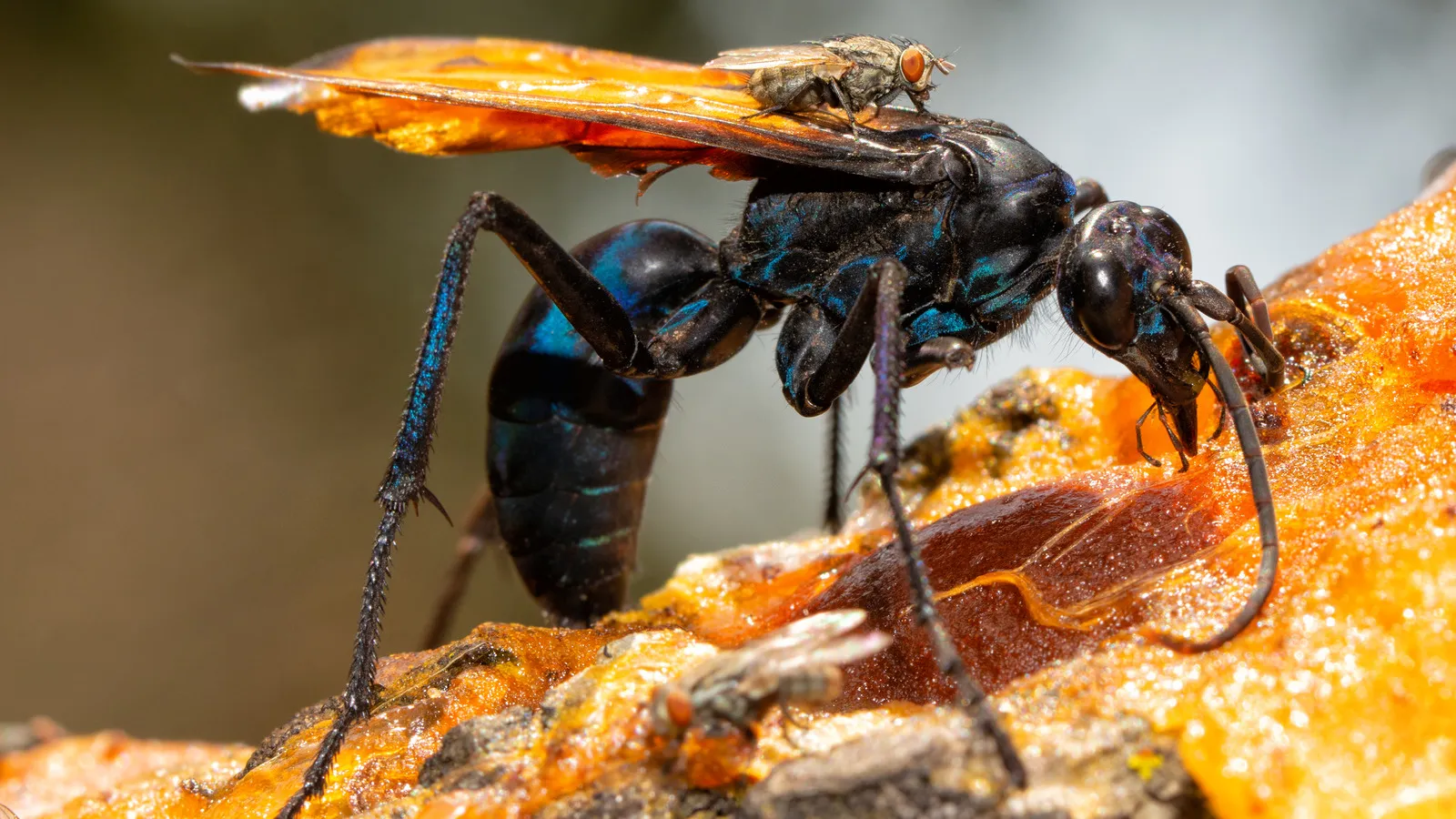Understanding Tarantula Hawks
Tarantula Hawks are large, striking wasps known for their formidable sting. These insects belong to the Pompilidae family and are easily recognized by their vibrant coloration, often featuring a black body with orange or blue wings. They are solitary wasps, and their primary prey are tarantulas, hence their name. The female tarantula hawk paralyzes the spider with its sting, drags it to a burrow, lays an egg on its abdomen, and then seals the entrance. The wasp larva then hatches and feeds on the still-living spider. Understanding these creatures is the first step in knowing how to deal with a sting. They are not aggressive by nature, but will defend themselves if threatened. Knowing their habitat and behavior can help prevent encounters.
What Makes Tarantula Hawk Stings So Painful
The tarantula hawk sting is widely considered one of the most painful insect stings in the world. The excruciating pain is not just due to the venom, but also because of the sting itself. The wasp’s stinger is long and sturdy, designed to penetrate the thick exoskeleton of a tarantula. The pain has been described as a searing, immediate agony that can last for several minutes. The intensity of the pain is graded at the top of the Schmidt Sting Pain Index. While the pain is intense, it is generally not life-threatening to humans. Understanding the nature of the pain can help you prepare mentally and emotionally if you ever experience a sting, which is critical to surviving it.
Tarantula Hawk Venom Composition
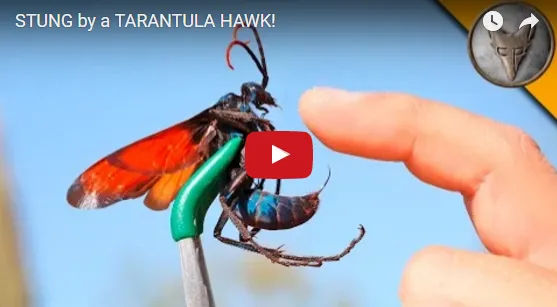
The composition of tarantula hawk venom contributes to the severe pain experienced after a sting. The venom contains a complex mixture of compounds that interact with the nervous system. These compounds include various peptides and enzymes that cause a rapid and intense burning sensation. The primary effect of the venom is to target the nervous system, leading to the intense pain. Unlike some venoms that also cause tissue damage, the tarantula hawk venom’s primary effect is neurological, specifically designed to paralyze its spider prey. This specificity leads to the excruciating pain that is characteristic of a sting. Research into the venom’s composition is ongoing, and understanding the specific compounds is key to developing better treatment and pain management strategies.
Identifying Tarantula Hawks
Recognizing a tarantula hawk is crucial for avoiding stings. These wasps are large, typically 1 to 2 inches long, and have a distinctive appearance. They have a black body with brightly colored wings, usually orange or blue. The wings are often smoky or iridescent. They have long legs and antennae, and they are very active fliers. The males and females look similar, but the females are generally larger. They have a powerful, piercing stinger. They can be found in the southwestern United States and other areas with warm climates. Being able to identify them allows you to take precautions to prevent stings by maintaining a safe distance and avoiding actions that might provoke them. Observing the wasp’s behavior can also help you to predict its actions and take appropriate steps.
Where Do Tarantula Hawks Live
Tarantula hawks thrive in warm and arid environments. They are commonly found in the southwestern United States, including states like Arizona, New Mexico, and Texas. Their habitat includes deserts, scrublands, and areas with sandy soil where tarantulas are present. They are also seen in parts of South America and Australia. They build nests in the ground, often in sandy or loamy soil. The presence of their prey, the tarantula, dictates their distribution. Understanding their preferred habitats can help you avoid encounters. When hiking or spending time outdoors in areas known to have tarantula hawks, be aware of your surroundings, especially near potential nesting sites or where tarantulas are likely to be found, like under rocks or in crevices. This knowledge is crucial for preventive measures.
Avoiding Tarantula Hawk Encounters
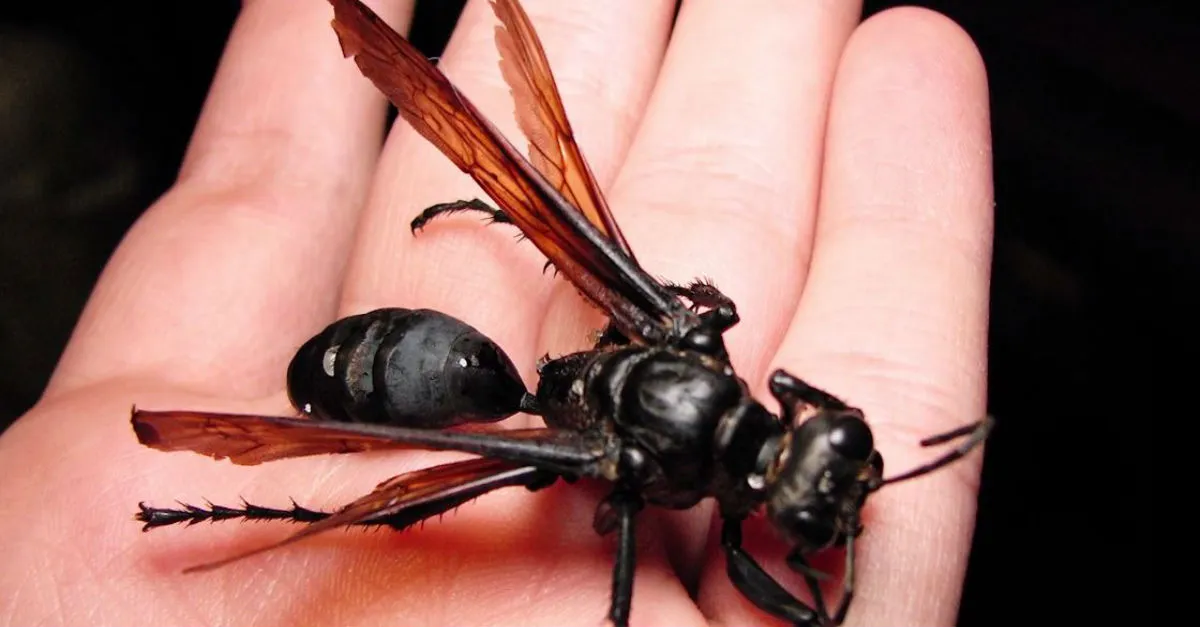
Preventing a tarantula hawk sting involves being proactive. The best way to avoid a sting is to avoid situations that might provoke them. This includes staying away from their habitat, particularly during their active season, which is typically late summer and fall. Avoid disturbing them or their nests. Do not swat at them or make sudden movements. Wear protective clothing when you are in areas where tarantula hawks are common. Long sleeves and pants can offer some protection. Be cautious when reaching into areas like rock piles, woodpiles, or under objects, as tarantula hawks might be nesting nearby. By taking these preventative steps, you reduce your chances of getting stung. Always be aware of your surroundings and stay vigilant, particularly during activities like hiking or gardening.
Preventive Measures
Implementing specific preventive measures can significantly reduce your risk of being stung. When working or recreating in areas known to harbor tarantula hawks, wear protective clothing. This includes long-sleeved shirts, long pants, and closed-toe shoes. Avoid wearing bright colors, as these can attract insects. Be cautious around potential nesting sites, such as sandy areas, burrows, and cracks in the ground. If you see a tarantula hawk, observe it from a distance and do not approach it. Keep a safe distance from vegetation and structures where they might be nesting. Regularly inspect your property and remove any potential nesting sites. Teach children about these insects and the importance of staying away from them. This proactive approach is your best defense.
Recognizing the Signs of a Sting
Recognizing the signs of a tarantula hawk sting is essential for prompt action. The most immediate sign is excruciating pain at the sting site. This pain is often described as sudden, intense, and burning. It may be accompanied by swelling, redness, and warmth around the sting area. The pain can radiate from the site and might cause temporary paralysis. Other symptoms can include a rapid heartbeat, sweating, and anxiety. It is essential to quickly identify these symptoms to provide immediate aid and to seek medical attention. If you experience these signs, it is important to stay calm, move away from the area, and alert anyone nearby of the situation. Knowing what to expect can help you react quickly and appropriately.
Immediate Actions to Take
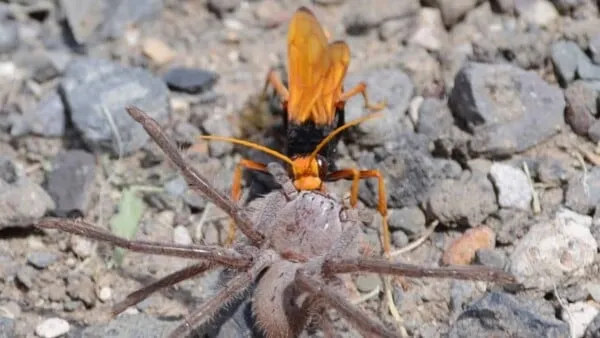
If you are stung by a tarantula hawk, take immediate action. The priority is to move away from the area to prevent further stings. Stay calm, and reassure anyone with you. Seek a safe location and try to assess the sting site. It is unlikely that the stinger will remain in the skin, but if it does, gently remove it. Do not squeeze the area, which can spread the venom. The next step is to clean the sting site gently with soap and water. Apply a cold compress to reduce swelling and pain. If the person experiences any difficulty breathing, dizziness, or signs of an allergic reaction, seek immediate medical assistance. Being prepared with the right actions can significantly reduce the impact of the sting and increase the chances of a speedy recovery.
First Aid Steps
Following the correct first aid steps can help manage the sting and alleviate pain. Immediately after being stung, apply a cold compress or ice pack to the sting site. This will help to reduce swelling and provide temporary relief. Elevate the affected limb, if possible, to minimize swelling. Over-the-counter pain relievers like ibuprofen or acetaminophen can help manage the pain. Monitor the person for any signs of a severe allergic reaction, such as difficulty breathing, swelling of the throat or face, or dizziness. If any of these symptoms occur, call for emergency medical help immediately. While first aid can alleviate immediate symptoms, medical attention might be needed to manage pain and any complications. Knowing what to do can make a big difference in the recovery process.
Treating the Sting
Treating a tarantula hawk sting involves both immediate and long-term care. Applying a cold compress is essential in the first few minutes. Over-the-counter pain relievers can help reduce pain and inflammation. For severe pain, a doctor may prescribe stronger pain medication. In some cases, antihistamines can help manage allergic reactions, such as itching and swelling. The sting site should be kept clean to prevent infection. Avoid scratching, as this can make the symptoms worse. Depending on the severity of the sting, medical attention might be necessary. Treatment aims to reduce pain, manage any allergic reactions, and prevent complications. Following a doctor’s advice and aftercare instructions is essential for a full recovery.
Pain Management Techniques
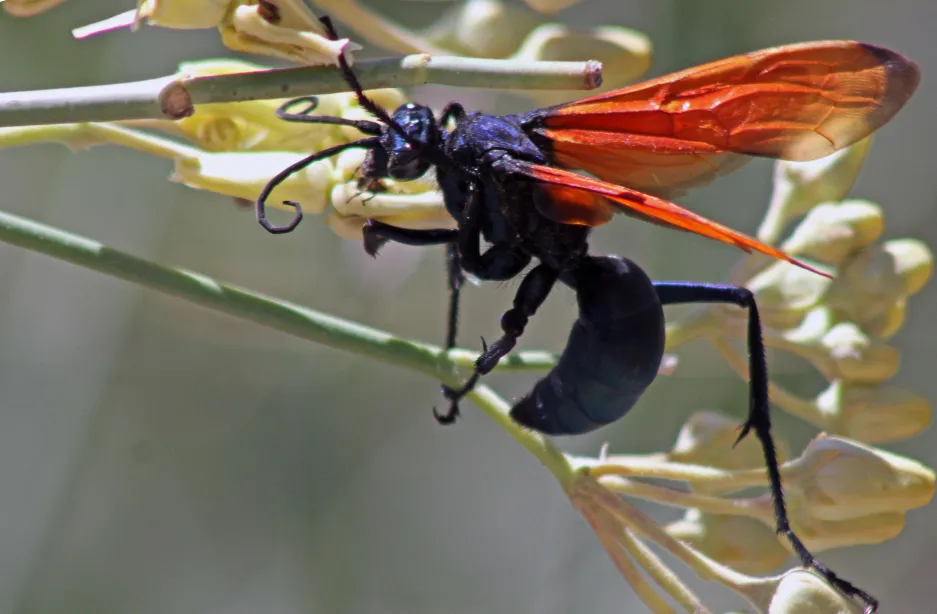
Managing the intense pain of a tarantula hawk sting involves multiple techniques. Applying a cold compress to the sting site is the first and most immediate step. This helps to reduce swelling and numb the area, providing relief. Over-the-counter pain relievers, such as ibuprofen or acetaminophen, can help manage the pain. If the pain is severe, a doctor might prescribe stronger pain medication. Some individuals find that applying a paste of baking soda and water can help to neutralize the venom and reduce pain. Resting and staying calm can help, too. If symptoms get worse, seek medical care. It is essential to stay calm and follow your doctor’s advice.
Medical Attention When Needed
It is important to recognize when medical attention is needed after a tarantula hawk sting. Seek medical help immediately if you experience any signs of a severe allergic reaction, such as difficulty breathing, swelling of the face or throat, dizziness, or loss of consciousness. If the pain is unbearable and does not subside with home treatment, a doctor can prescribe stronger pain medication. Infection at the sting site is another reason to seek medical care. If the sting site becomes increasingly red, swollen, or filled with pus, you may have an infection. Anyone who is unsure about the severity of their symptoms or has underlying health conditions should also seek medical advice. Early and correct treatment can prevent complications and facilitate recovery.
Recovery and Aftercare
Recovery from a tarantula hawk sting can take several days, depending on the severity of the sting and your individual reaction. Rest and avoid strenuous activities to allow your body to recover. Keep the sting site clean and dry to prevent infection. Continue to apply a cold compress to reduce swelling and pain. Follow your doctor’s instructions for any medications or treatments. Monitor the sting site for any signs of infection, such as increased redness, swelling, or pus. It is essential to stay hydrated, especially if you are experiencing pain or fever. Most people recover fully, but in some cases, there may be lingering effects. Following the correct aftercare steps is key to a smooth recovery.
Symptoms and What to Expect
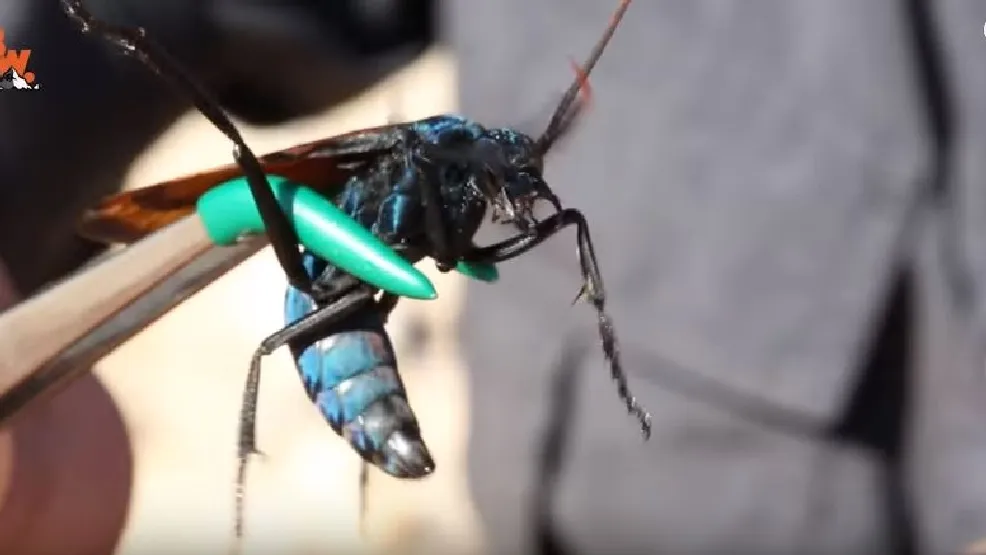
Understanding the symptoms and what to expect after a tarantula hawk sting can help you manage your expectations. Immediately after the sting, you will experience intense pain that peaks within minutes. This is followed by swelling, redness, and warmth at the sting site. The pain can last for several minutes to hours. Other symptoms can include anxiety, rapid heart rate, and sweating. In some cases, there may be temporary paralysis or muscle weakness. These symptoms typically subside within a few hours to a day. If you have an allergic reaction, the symptoms can include difficulty breathing, swelling, and dizziness. In such cases, seek immediate medical help. Knowing what to expect can help you to remain calm during the ordeal and follow medical advice.
Long-Term Effects
While most people fully recover from a tarantula hawk sting without any lasting effects, there can be potential long-term effects. Some individuals may experience persistent pain or sensitivity at the sting site. In rare cases, chronic nerve pain or other neurological issues can develop. It is also possible to develop an allergy to the venom after being stung multiple times. In very rare instances, the sting can lead to more severe complications, especially if there is a significant allergic reaction or infection. It is important to seek medical attention and follow your doctor’s advice to minimize the risk of long-term complications. Regular follow-up appointments can help monitor any lingering effects and ensure proper care.
Debunking Myths About Tarantula Hawks
There are several myths about tarantula hawks that need to be debunked. One common myth is that the sting is always fatal. While extremely painful, a tarantula hawk sting is generally not life-threatening unless there is a severe allergic reaction. Another myth is that tarantula hawks are aggressive and will attack anyone. In reality, they are solitary insects that typically only sting when threatened. Another false notion is that the sting will leave permanent damage. While the pain can be intense, it typically resolves within hours or days. Understanding these myths and the realities can help you to avoid unnecessary fear and anxiety. By relying on facts and evidence-based information, you can better understand these creatures and take appropriate actions if you encounter them.
